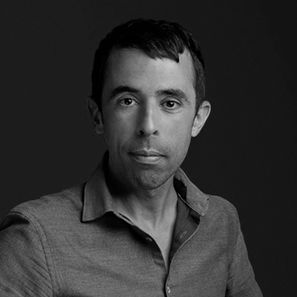
People
João Sousa Cardoso
João Sousa Cardoso is an artist, essayist and university professor.
He is a professor at Universidade Lusófona where he is director of the degree in Audiovisual Communication and Multimedia since 2010. He was a guest professor at the Faculty of Fine Arts of the University of Porto between 2011 and 2020. He is an associate member of CRILUS/Centre de Recherches Interdisciplinaires sur le Monde Lusophone, from the University of Paris Nanterre.
He directed TEATRO EXPANDIDO!, in the year of reopening of Teatro Municipal do Porto, in 2015, crossing the dramaturgy of the 20th century, staging 11 plays in 12 months and mobilizing dozens of actors, professionals and amateurs.
He also created the shows O Bobo (2006), based on Alexandre Herculano, and A Carbonária (2008), Raso como o Chão (2012) and Barulheira (2015), based on Álvaro Lapa. He directed the films A Ronda da Noite (2013) based on Heiner Müller, and Baal (2013), A Santa Joana dos Matadouros (2014) and Na Selva das Cidades (2016), based on Bertolt Brecht.
He has a degree in Fine Arts from the Faculty of Fine Arts of the University of Porto, a master's degree in Communication Sciences from the Universidade Nova de Lisboa and a doctorate in Social Sciences from the Paris Descartes University (Sorbonne). He received a scholarship from the Calouste Gulbenkian Foundation between 2006 and 2009. He staged Sequências Narrativas Completas, based on Álvaro Lapa, premiered at the Teatro Nacional D. Maria II in 2019, and A Ronda da Noite, based on Agustina Bessa-Luís, at the Calouste Gulbenkian Foundation in 2022.
He was curator of the ANATÓMICO TEATRO exhibition at Centro de Arte Oliva, from the Treger Saint Silvestre Collection with André Sousa, Fernão Cruz and Horácio Frutuoso, in 2023. He published the books TEATRO EXPANDIDO! in 2016, Sequências Narrativas Completas and A Espanha das Espanhas, in 2020. He regularly writes essays for the art magazine Contemporânea and the newspaper Público.








